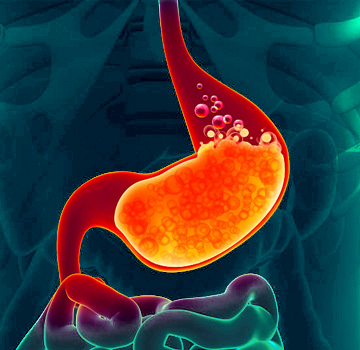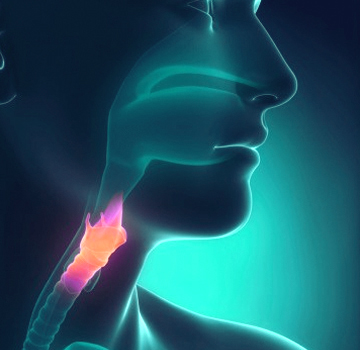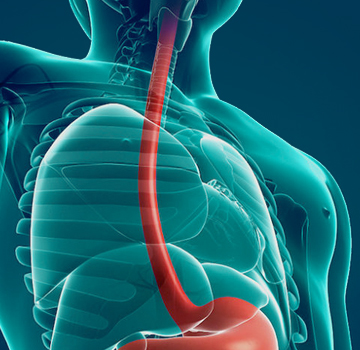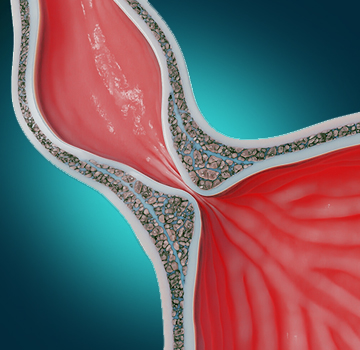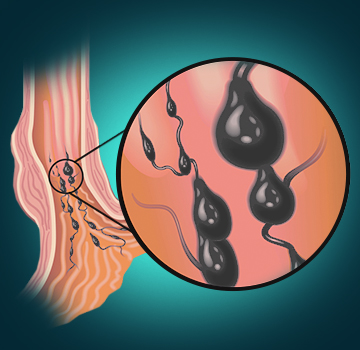Esophageal
Diseases
Reflux
It is an inflammation of the gastric mucosa, which is the layer of cells that lines the stomach on the inside, protecting it from the acidity of gastric juices.
Although it is not correct, the term gastritis is often used as a synonym for dyspepsia (pain or discomfort in the upper abdomen, as well as symptoms of burning, pressure or fullness often related, although not necessarily, to food).
Depending on its duration over time, it can be acute or chronic gastritis.
Symptoms: Poor digestion, bloating, heartburn, nausea and vomiting, loss of appetite, dark colored stools.
Esophagitis
Gastroesophageal reflux disease is when stomach contents back up into the esophagus, directly affecting quality of life and increasing the risk of esophageal cancer.
This is why it is important to go to a consultation to give timely treatment and explore the existing options. When reflux treatments do not work for a patient, the doctor may opt for a surgical procedure.
Laparoscopic surgery for gastroesophageal reflux disease may involve a procedure to strengthen the lower esophageal sphincter, called a Nissen fundoplication.
Barrett's esophagus
It is a condition in which the flat, pink lining of the esophagus that connects the mouth to the stomach is damaged by acid reflux, causing the lining to become inflamed and patchy red.
The development of Barrett's esophagus is most often attributed to long-standing gastroesophageal reflux disease, which may include these signs and symptoms: Frequent heartburn and regurgitation of stomach contents, difficulty swallowing food, chest pains, in minor extent.
People with Barrett's esophagus are more likely to develop esophageal cancer.
Acalasia
It is a rare disorder that makes it difficult for food and liquid to pass from the esophagus, which connects the mouth to the stomach, into the stomach.
Achalasia occurs when the nerves in the stomach are damaged. As a result, the esophagus becomes paralyzed and dilated over time, eventually losing the ability to push food into the stomach. So, the food accumulates in the esophagus. Sometimes it ferments and returns to the mouth, where it can taste bitter.
Some people confuse it with gastroesophageal reflux disease. However, in achalasia, food comes from the esophagus, while in gastroesophageal reflux disease, it comes from the stomach. The most common causes of this disease are peptic ulcer disease, erosive gastritis, and esophageal varices.
Esophageal varices
They are abnormally dilated veins found in the internal portion of the esophagus, through which a part of the blood circulates that in normal conditions should pass through the liver. Its dilation is a consequence of the difficulty that the liver can have due to being sick.
The main problem of the existence of esophageal varices is the risk of rupture that occurs when the pressure inside the varices exceeds the resistance of their wall, which causes bleeding.
The most effective treatment to stop gastrointestinal bleeding from esophageal varices is ligation, with the aim of stopping variceal bleeding. New episodes can also be prevented by trying to eradicate varicose veins to avoid complications.
The most common problem with the Esophagus
It is Gastroesophageal Reflux Disease (GERD). GERD occurs when a muscle at the end of the esophagus does not close properly. This allows stomach contents to flow back into the esophagus and irritate it, known as Reflux. Over time, GERD can cause Lesions in the Esophagus.

